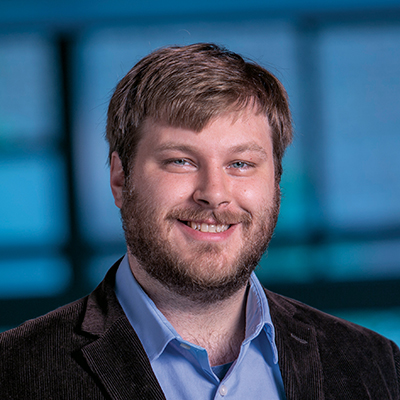As a high-school student in St. Louis, MO, Anthony Sigillito thought he’d be a professional photographer. He was an avid landscape photographer, with a job taking portraits of school sports teams. Then, as a freshman at the University of Dallas, he fell in love with physics. When he embarked on his Ph.D. program at Princeton University in 2011, he thought he’d study fundamental physics, but that didn’t quite suit him either.

“I started to quickly realize that I am drawn more towards applied problems,” says Sigillito, Assistant Professor in Electrical and Systems Engineering at Penn Engineering. His research group is working on building hardware for a quantum computer, using nanoscale devices called quantum dots. These tiny bits of silicon and germanium, formed into structures similar to the transistors on computer chips, are so small that they can trap individual electrons. These electrons are controlled using bursts of microwaves.
With such control, quantum computers will use the laws of quantum mechanics to do complex calculations much more quickly than traditional machines ever could, vastly increasing their computational power. “If we can get a quantum computer to work, it would have huge implications for society,” says Sigillito. “Quantum computers hold the promise to help design drugs. They could help to answer some really fundamental physics questions.”
Sigillito likes the extreme engineering challenges involved in this work, as not only do the quantum dots have to be vanishingly small, they also operate at only a fraction of a degree above absolute zero (less than -459.6 Fahrenheit), the coldest temperature there is. They have to be contained within a dilution refrigerator — a Russian-doll-like stack of coolers, with each shell colder than the next. And they have to be electrically isolated, as a spark of static electricity from someone wearing a wool sweater could destroy them. Then there’s figuring out how to get these delicate devices to talk to one another without destroying the fragile quantum properties that make them useful.
Recently, Penn entered into an academic partnership with UK-based Quantum Motion, a company developing fault tolerant quantum computing architectures that are compatible with CMOS (complementary metal-oxide-semiconductor) processes. In this partnership, the Sigillito lab will test the fundamental limits of qubit control using Quantum Motion’s chips.
Between working on such systems and spending time with his wife and three young daughters, Sigillito has little time left over, though he occasionally manages to squeeze in a game of golf. But he still has fun, and he enjoys knowing that his lab is two floors above the space where ENIAC, the world’s first general-purpose digital computer, was built during World War II. “It’s kind of cool that we’re working on a fundamentally new type of computer in the same building where the first generation of computers was developed,” he says.
